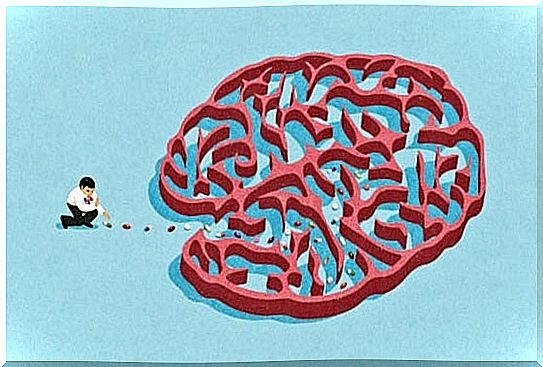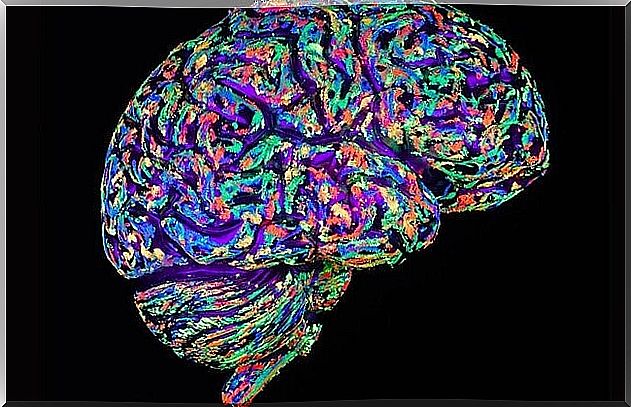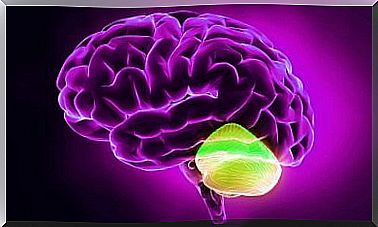Diazepam: What Is It And What Are Its Effects

Diazepam (better known by its brand name Valium) is a drug belonging to the family of anxiolytics and hypnotics. To this day, this type of psychotropic derivative of benzodiazepines continues to be one of the most administered (and effective) for the treatment of anxiety, insomnia, panic attacks and as sedatives prior to certain types of interventions.
We have all heard of diazepam. What’s more, it may have been prescribed to us at some time or it is possible that someone close to us is one of those patients used to having it on their bedside table. The WHO itself (World Health Organization) has it included in its list of essential medicines for a very specific reason: it is one of the most effective standard benzodiazepines used today.
However, there is one fact that we cannot ignore. Its use is so frequent that sometimes we come to “normalize” its administration. However, this is not a harmless drug. Diazepam, like the rest of the benzodiazepines, carries a high risk of dependence. Its administration must be punctual, controlled and limited in time.
Next, we suggest you know more about this type of psychoactive drug.

Diazepam: uses and mechanism of action
Pablo has had a season with great ups and downs. He has the feeling that everything is slipping from his grasp and that the world is going too fast under his feet. He lost his father two months ago due to a heart problem, the company where he works is reducing its workforce and feels that its productivity is decreasing. You fear being fired. His level of anxiety, his trouble falling asleep and his nervousness is such that after talking to his primary care doctor, he has prescribed diazepam.
The treatment will be 8 weeks. They will then evaluate the progress and proceed to a gradual withdrawal of the drug. If Pablo does not experience improvement, his doctor will refer him to a psychiatrist to try other treatments and start some type of therapy. Our protagonist commits himself to his doctor and begins the treatment, but not before trying to know a little more about that little pill that from now on will accompany him for a few weeks.
Who Created Diazepam?
Diazepam was the second benzodiazepine that Leo Sternbac invented around the 1960s. It is five times more powerful than its predecessor, chlordiazepoxide. Until then, doctors prescribed the classic barbiturates for their patients, drugs with high dependence and quite serious side effects.
Diazapam was considered the “miracle drug” for a few years. What’s more, until not long ago it was the best-selling drug. However, little by little the doctors realized that these pills were not as safe as was initially believed. In fact, by the 90s, its commercialization fell by half.

What is diazepam?
Diazepam is a psychotropic drug. That is, it is a central nervous system depressant. Therefore, whether we like it or not, what the famous Valium does like the rest of the benzodiazepines is “decrease” the activity of the brain.
They do this by acting in different areas of the limbic system, the thalamus and the hypothalamus. Likewise, one of its main advantages is that it does not interact with the peripheral autonomic nervous system. That is, it will not produce any extrapyramidal side effects (motor problems such as dyskinesias or dystonia).
Neuroscientists deduce that its action is initiated by binding to GABA receptors to inhibit their activity. After that, the functioning of certain areas of the brain slow down to experience a prolonged state of drowsiness, decrease in anxiety and relaxation of the muscles.
What is diazepam used for?
Diazepam, given its sedative and hypnotic effects, has multiple uses, they are the following:
- Short-term treatment of insomnia.
- It is also used to treat anxiety, panic attacks and states of agitation.
- Treatment of status epilepticus.
- Initial management for various mood disorders such as mania. It is usually used in combination with lithium, valproate, or neuroleptics.
- Diazzepam is also used to treat alcohol and opiate withdrawal.
- Diazepam is used together with other antidepressants in patients who develop suicidal thoughts.
- It is effective for various painful muscle conditions.
- It is also used to treat various muscle paresis due to brain injuries or problems.
- Diazepam is always present in outpatient clinics or hospitals to be used as sedation prior to an operation.
How does diazepam work?
Diazepam can be taken orally, intravenously, intramuscularly, or rectally. Oral administration is always recommended because it is absorbed quickly and well. It reaches the bloodstream in a short time and its mechanism of action begins after 15 or 45 minutes.
- Once in the blood it is redistributed throughout the tissues. Soon it reaches our brain and the entire nervous system by crossing the blood-brain barrier.
- Once here, and as we already know, it facilitates the inhibitory action of the neurotransmitter gamma aminobutyric acid (GABA). In this way we benefit from its relaxing and hypnotic effect.
- Also, it should be remembered that the metabolism of diazepam is carried out in the liver. This drug has a fairly long life (between 30 and 60 hours), therefore we need this organ to be healthy to be able to metabolize it effectively.
Dose
The doses will be adjusted by the specialist doctor based on our needs. However, they are always usually between 5 and 10 milligrams a day. The maximum dose should never exceed 40 mg daily.

What side effects does diazepam have?
We pointed it out at the beginning: the duration of treatment should be short, supervised by our doctor, not exceeding 8-12 weeks and never exceeding the prescribed doses. Beyond this period of time and if we exceed the recommended doses (or if we combine them with others on our own) the consequences can be serious.
Let’s now see what side effects diazepam has, which, and as we can deduce, are common to most benzodiazepines.
Most common side effects of diazepam
- Drowsiness.
- Impaired motor function.
- Coordination problems.
- Balance problems.
- Dizziness.
- Dry mouth.
- Small memory glitches.
Effect of diazepam due to a principle of mild dependence
- Tremors and more obvious coordination problems.
- Nervousness, irritability
- Insomnia.
- Headaches
- Muscle cramps.
- Problems driving safely.
- Difficulty speaking fluently.
- Concentration problems.
- Anterograde amnesia.
Severe symptoms of diazepam dependence
- Tachycardias
- Paradoxical states of consciousness.
- Irregular, fast, or slow breathing.
- Lack of coordination.
- Loss of consciousness.
- Muscular weakness.
- Extreme drowsiness
- Muscle pain.
- Bluish nails due to a lack of oxygen in the blood.

Diazepam contraindications and general precautions
Diazepam can have a detrimental effect in certain conditions, therefore, use of this medication should be avoided if you suffer from:
- Hypersensitivity to benzodiazepines
- Myasthenia gravis. A disorder of the nervous system that causes muscle weakness.
- P roblems breathing or sleep apnea of the (condition in which a person stops breathing briefly several times during the night).
- Diseases of the lungs or liver.
- It is also not recommended for women who are breastfeeding.
On the other hand, if you are pregnant or planning to become pregnant, it is important to consult your doctor before taking diazepam. The same applies for patients over 65 years of age. Well, older adults should not usually take diazepam, due to the level of risk involved in combining its use with other medications that can treat the same conditions.
Additionally, since this medication can cause drowsiness, it is recommended not to drive any vehicle or operate machinery until the patient knows how this medication affects them.
Finally, the concomitant use of barbiturates, alcohol or other depressants of the Central Nervous System should be avoided, since they increase cardiac or pulmonary depression with the consequent increase in the risk of apnea. In these cases, the necessary equipment to maintain respiration should be available if required.
In conclusion. Let us consider that a good part of the population that receives treatment for anxiety usually takes diazepam for quite long periods, which often leads to dependence and tolerance to the drug. This means that little by little we will need higher doses to achieve the same effect and our health will lose out.
Psychotropic drugs, while valid in many cases, are not always an answer or the complete answer to our black holes. Chemistry numbs, relaxes, and eases worries, but it hardly solves problems. It’s like putting on crutches when you have been seriously injured in the leg: crutches allow you to walk, but once you leave them, if there is no other type of intervention, you will continue to be unable to do so.
In this sense, let’s use crutches, but let’s not give up the operation (psychological treatment). Let’s make a space for the psychological approach and give our body and our health the opportunity not to acquire a dependency to live.
Bibliographic references
Andrés-Trelles, F. (1993) Drugs used in anxiety: benzodiazepines and other anxiolytics . Madrid: MacGraw Hill Interamericana.
Hardman JG, Goodman LS, Gilman A. (1996) The pharmacological bases of therapeutics. Vol. I. Pages. 385-398. Madrid: MacGraw-Hill Interamericana.
Robert Whitaker, (2015) Anatomy of an epidemic, Madrid: Captain Swing









